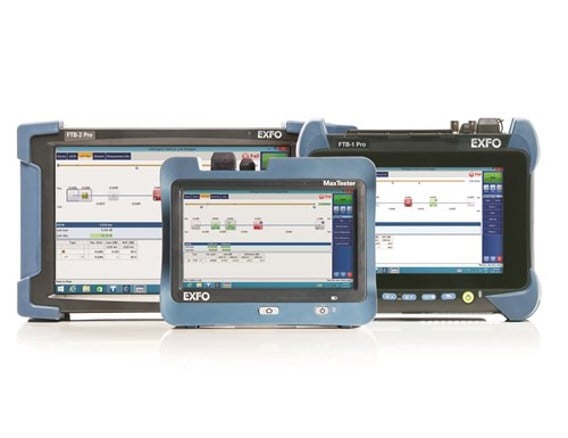
Key features

Applications
Description
Understanding encircled flux
Encircled Flux (EF) is a new standard that defines how to control the source launch conditions as specified in TIA-526-14-B and IEC 61280-4-1 Ed. 2.0.
Whether for an expanding enterprise business or a large-volume data center, the new high-speed data networks built with multimode fibers are running under tighter tolerances than ever before.
These multimode fibers are the trickiest links to test because the results depend greatly on each device’s output conditions. Testing with different equipment often returns different test results, sometimes higher than the budget loss itself. This may mislead the technician or make it impossibleto locate the fault, resulting in unsuccessful turnups or a longer network downtime. Now, cable installers can rely on their tier-1 loss results to perform tier-2 troubleshooting, and do so with maximum accuracy and utmost confidence of finding the actual problem.
Consistency and repeatability
Whether built-in or packaged in the external launch conditioner, EXFO tunes each EF-compliant device to perfection in-house, ensuring that every unit meets the EF templates for both 850 and 1300 nm at 50 μs. This allows technicians and contractors to obtain reliable, consistent and repeatable results during construction, thus eliminating doubts and uncertainty. The test documentation that is generated will also help future-proof networks. When upgrades are needed, technicians and contractors will know quickly which circuits have to be activated, thereby saving time and troubles down the line.
The necessity of launch and receive cables
Link characterization is often performed using an OTDR. However, despite the fact that an OTDR has the shortest dead zones, the way loss is measured in a link means that to characterize the first and last connectors, an OTDR needs a launch cable, also called a pulse suppressor box.
The reason for this is that the loss associated with an event is the difference between the backscattering levels measured before and after the event. To account for the dead zone, a backscattering level must be obtained before the first connector. This requires inserting a length of fiber between the OTDR port and the first connector of the fiber under test. At the other end, the same lengthof fiber is inserted after the last connector.
In order to measure the loss of the first and last connectors, it is important to use launch and receive cables. The SPSB-EF has an internal 30-meter fiber that allows complete end-to-end loss while still maintaining the EF launch conditions up to the first connector of the link. By complying with the EF standards, faulty connectors are easily located when troubleshooting high-speed multimode links.

FLS-600 - Light source
Part of EXFO’s 600 handheld series, the FLS-600 Light Source is designed for first-class versatility—it offers laser and LED models, as well as various wavelength options.

iOLM - intelligent Optical Link Mapper
Automated, expert-level singlemode and multimode fiber testing that eliminates the need to manually configure parameters or analyze and interpret multiple complex OTDR traces
